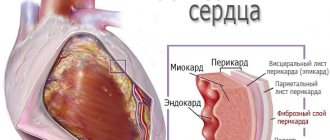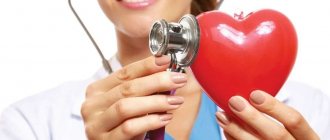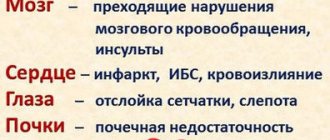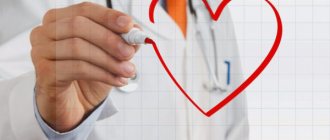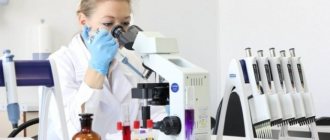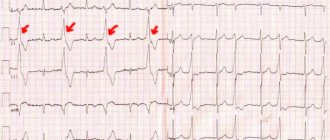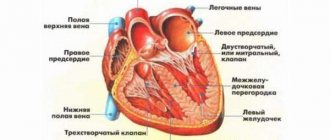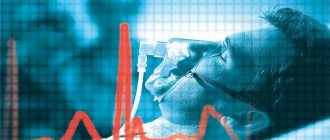Recently, heart disease is increasingly being diagnosed in childhood. The most common pathology of the heart muscle in children is cardiopathy, a disease of non-infectious origin that manifests itself in changes in heart tissue. How is cardiopathy manifested and treated in children?
Clinical picture
Manifestations of cardiopathy differ depending on its form. The following symptoms are characteristic of the stagnant variety of the disease:
- painful sensations of a pressing and aching nature in the chest, not relieved by Nitroglycerin;
- the appearance of signs of cyanosis on the face (blue skin);
- deformation of the chest due to cardiac hypertrophy (appearance of a “heart hump”).
Signs of congestive cardiopathy progress extremely quickly. Gradually, the disease leads to limited ability to move.
The restrictive form of the pathology is manifested by the following symptoms:
- pain in the heart area;
- shortness of breath with any physical activity;
- swelling of the face;
- belly growth.
The restrictive variety of the disease is diagnosed mainly in the tropics. The patient's physical activity is significantly reduced due to the worsening condition.
The hypertrophic type of the disease has pronounced symptoms:
- sharp chest pain;
- manifestation of arrhythmia;
- constant shortness of breath;
- loss of consciousness;
- dizziness.
Gradually developing heart failure aggravates the patient's condition. In advanced cases, even with light physical activity, death is possible.
Ischemic cardiopathy is characterized by the following symptoms:
- arrhythmia;
- pain in the heart;
- frequent shortness of breath;
- general weakness;
- lack of oxygen;
- excessive sweating;
- paleness of the skin;
- loss of consciousness.
Symptoms become more pronounced with physical activity. Heart failure due to ischemia progresses rapidly and can lead to thrombus rupture and death.
The manifestation of the secondary type of pathology depends on the localization and severity of the primary pathological process. Most often it is expressed by the following symptoms:
- excessive sweating;
- swelling;
- feeling of squeezing in the heart area;
- cough;
- frequent shortness of breath.
Secondary cardiopathy in children usually progresses as the primary disease develops. During diagnosis, doctors see it as a violation of the integrity of the myocardium.
The functional variety is manifested by signs of vegetative-vascular dystonia:
- fainting state;
- attacks of shortness of breath;
- arrhythmias (mainly tachycardia, extrasystoles);
- excessive sweating.
The development of the disease depends on the degree of overload of the child. If the problem is not identified in a timely manner, it will not be possible to avoid serious pathological changes in the myocardium.
It is difficult to detect cardiopathy in both newborns and adolescents. Symptoms characteristic of the disease are most often attributed to other pathologies of the cardiovascular system. A doctor can make an accurate diagnosis only with the help of a comprehensive instrumental examination.
Diagnostics
Cardiopathy is most difficult to detect in newborns, so suspicion of heart problems usually arises at the time of birth. Usually these are asphyxia, birth injuries and infection. Posthypoxic cardiopathy is most often diagnosed in infants. Any of these points may cause more careful monitoring of the newborn in the first weeks of his life.
For direct diagnosis, 3 main methods are used:
- Ultrasound of the heart;
- ECG;
- Echocardiography.
Problems with the heart are reflected in its rhythm, and with the help of these methods you can thoroughly study the heartbeat and make a diagnosis. For example, for an ECG, electrodes are placed in different areas, which correspond to different areas of the heart. The finished diagram paints a picture for each area, which makes it possible to determine the specific type of disease.
In some cases, the cardiologist may additionally prescribe a chest x-ray. This “photograph” of the heart muscle allows you to see how enlarged the ventricle is. Most often, x-rays are prescribed for dilated cardiopathy.
Causes
Cardiopathy in children mainly develops for the following reasons:
- Genetics. Cardiomyocytes (heart cells) are made of proteins. They take part in all processes performed by the heart muscle. Information about the structure of heart cells is stored at the genetic level. If the baby has a defective gene, then there is a possibility of improper development of the main organ. In this case, we are talking about the primary form of cardiopathy.
- Infectious or toxic nature. The development of cardiopathy can be influenced by toxins and infections that enter the body. They are not detected immediately due to the frequent absence of pronounced symptoms. No abnormalities of the valves or coronary vessels are detected.
- Autoimmune failures. Immune system dysfunction is mainly caused by infections, toxins and hormonal surges. The body begins to destroy its own cells, thereby causing secondary pathologies.
- Fibrosis (cardiosclerosis). Replacement of heart tissue with connective fibers leads to impaired contractility due to loss of elasticity. Fibrosis most often occurs after a myocardial infarction, so its nature is predominantly secondary.
The listed cases are considered the main ones, but doctors can only stop their manifestations. It is virtually impossible to eliminate the causes due to the lack of effective treatments.
Among the pathologies of the cardiovascular system that influence the development of cardiopathy, the most basic can be identified:
- hypertonic disease;
- cardiac ischemia;
- amyloid dystrophy (failure of protein metabolism);
- disorders in the endocrine system;
- poisoning by toxins;
- connective tissue diseases.
Pathogenesis
Damage to the heart muscle is primarily associated with its mechanical (blood pumping) and electrical functions (conductivity). The basis of pathological processes is:
- the presence of infectious, viral and inflammatory aspects;
- autoimmune disorders - heart proteins can acquire antigenic characteristics, which provokes the synthesis of antibodies to them and leads to stretching of the heart chambers and systolic dysfunction;
- poisoning with various chemicals, including heavy metals, medications, alcohol, drugs, etc.;
- environmental factors, including radiation damage;
- decompensation of conditions;
- injuries;
- ischemia – lack of blood supply to the heart muscle itself;
- birth defects – heart defects and genetic predisposition;
- cancer formation.
Functional cardiopathy
Functional pathology is associated with impaired ability to perform the main task of the heart - pumping blood. Exposure to negative factors can lead to a decrease in the number of normally and fully functioning heart cells - cardiomyocytes. This leads to a decrease in cardiac output, which can lead to deterioration of coronary perfusion, decreased tissue oxygenation, fluid retention, activation of the sympathetic nervous and renin-angiotensin systems, peripheral vasoconstriction, tachycardia and arrhythmias .
It happens that cardiac disorders are not part of a generalized disease, but are isolated. They can lead not only to disability, but also to death.
Structure of the heart
Functional cardiopathy
If the mitral valve sagging and there is an abundance of tendon threads, the doctor diagnoses functional cardiopathy. Such structural abnormalities are abbreviated as MARS (minor anomalies of the heart). They contribute to the occurrence of arrhythmia attacks during physical activity. If the child continues to overexert himself (in physical education, when playing with friends, in classes), then heart failure will begin to develop over time.
A cardiologist will need to draw up a treatment regimen if the child has persistent arrhythmia and manifestations of mitral regurgitation (backflow of blood). The doctor will prescribe magnesium-based medications and antiarrhythmic drugs as treatments. It is equally important to create a daily schedule to eliminate heart-straining activities.
When functional cardiopathy is detected, regardless of its severity, parents must protect their child from physical and mental overload and follow all the recommendations of the cardiologist. It is unacceptable to use medications to correct heart rhythm on your own, or to increase or decrease the dosages indicated in the treatment regimen. The child’s heart muscle has not yet fully strengthened, and the presence of pathological changes in the structure of the myocardium only aggravates the situation, so only a doctor can prescribe a course of therapy and change it.
To saturate the heart with useful substances, you will need to change the child’s diet. It is advisable to remove sweets, fast food and other unhealthy foods from it in favor of vegetables and fruits rich in vitamins and microelements.
Treatment options
There is no specific treatment.
For dilated cardiomyopathy, treatment for heart failure is carried out:
- Digoxin in low doses.
- ACE inhibitors: captopril (adolescents - enalapril).
- Diuretics: furosemide.
- For severe heart failure in the intensive care unit, dopamine and dobutamine, anti-inflammatory steroids, and oxygen therapy are used as indicated. Treatment of arrhythmias according to protocols.
- In case of impaired microcirculation and a tendency to thrombus formation: heparin subcutaneously or intravenously, indirect anticoagulants (warfarin, rivaroxaban, dabigatran).
- Cardioprotectors: panangin, mildronate, cardonate.
For hypertrophic cardiopathy:
Cardiac glycosides and other cardiotonics are contraindicated.- Physical activity is limited (especially if it is a teenager).
- Beta blockers are used: propranolol. Sometimes calcium antagonists: verapamil.
- Prevention of infective endocarditis: antibiotics.
- For heart failure: ACE inhibitors, diuretics.
- Antiarrhythmics if necessary.
- If conservative therapy is ineffective, cardiac surgery is recommended.
For restrictive cardiomyopathy:
- Cardiac glycosides and other cardiotonics are contraindicated.
- Sports are prohibited. Physical activity is limited (especially for children).
- Calcium antagonists: verapamil, diltiazem.
- Antiarrhythmics: amiodarone.
- Treatment of heart failure.
Secondary form of the disease
Secondary cardiopathy in children is a consequence of another pathological process. Often the cause of its development is the following body conditions:
- hormonal changes;
- metabolic disorders;
- poisoning with toxic substances.
Treatment of the secondary form of pathology is prescribed by the attending physician after an examination, the purpose of which is to determine the true cause of the development. The essence of therapy will be based on correcting nutrition, reducing stress on the heart and eliminating the underlying pathological process.
Development factors
Disorders of the development of the heart muscle can be primary or secondary. Sometimes a child inherits such a pathology. Congenital cardiopathy is considered if a baby has a genetic mutation that disrupts the composition of proteins in cardiomyocytes. The quality of the contractile function of the heart depends on them. This deviation can be determined in the first days of life, which makes it easier to control the disease.
Forecast
Cardiopathy in children has a favorable prognosis only if detected early. Stopping the pathological process in a timely manner will allow the child to live to old age, but he will have to follow the recommendations of specialists and lead a healthy lifestyle. If cardiopathy is detected late, complications may develop, leading to disability and death.
Surgical treatment (if successful) prolongs the patient’s life and can eliminate the main cause of cardiopathy. The disadvantage of the operation is the high risk of death. According to statistics, every 6 people die on the operating table during heart surgery.
Cardiopathy has been diagnosed more and more often in recent years. Experts say that the blame lies with the deteriorating environment and the consumption of unnatural products. In childhood, it can be stopped without fatal complications for the body if treatment is started in a timely manner. The basis of therapy is antiarrhythmic and magnesium-containing drugs and lifestyle correction. Severe cases require surgery.
Prevention
To prevent the development of cardiopathy it is necessary:
- quit smoking, alcohol and drugs;
- regularly undergo a complete health examination;
- do not take medications randomly and do not self-medicate;
- control weight;
- avoid psychological stress;
- adhere to proper nutrition;
- normalize physical activity and rest - at least an hour of walking and eight hours of sleep.
